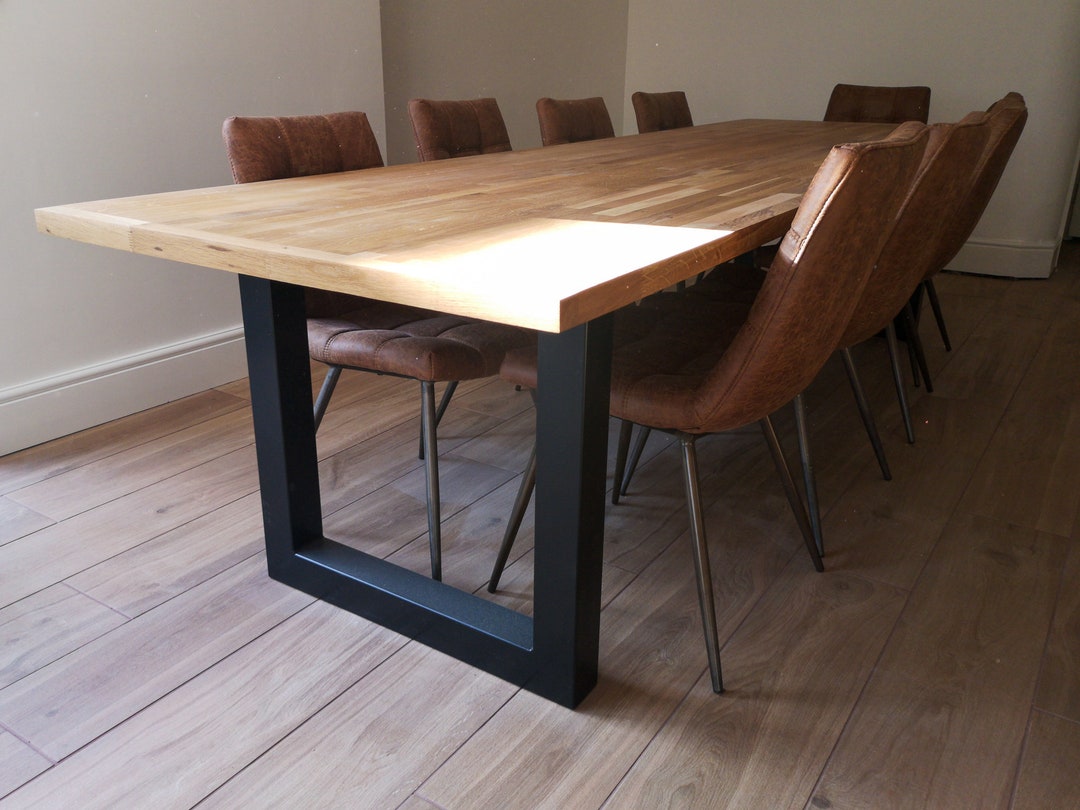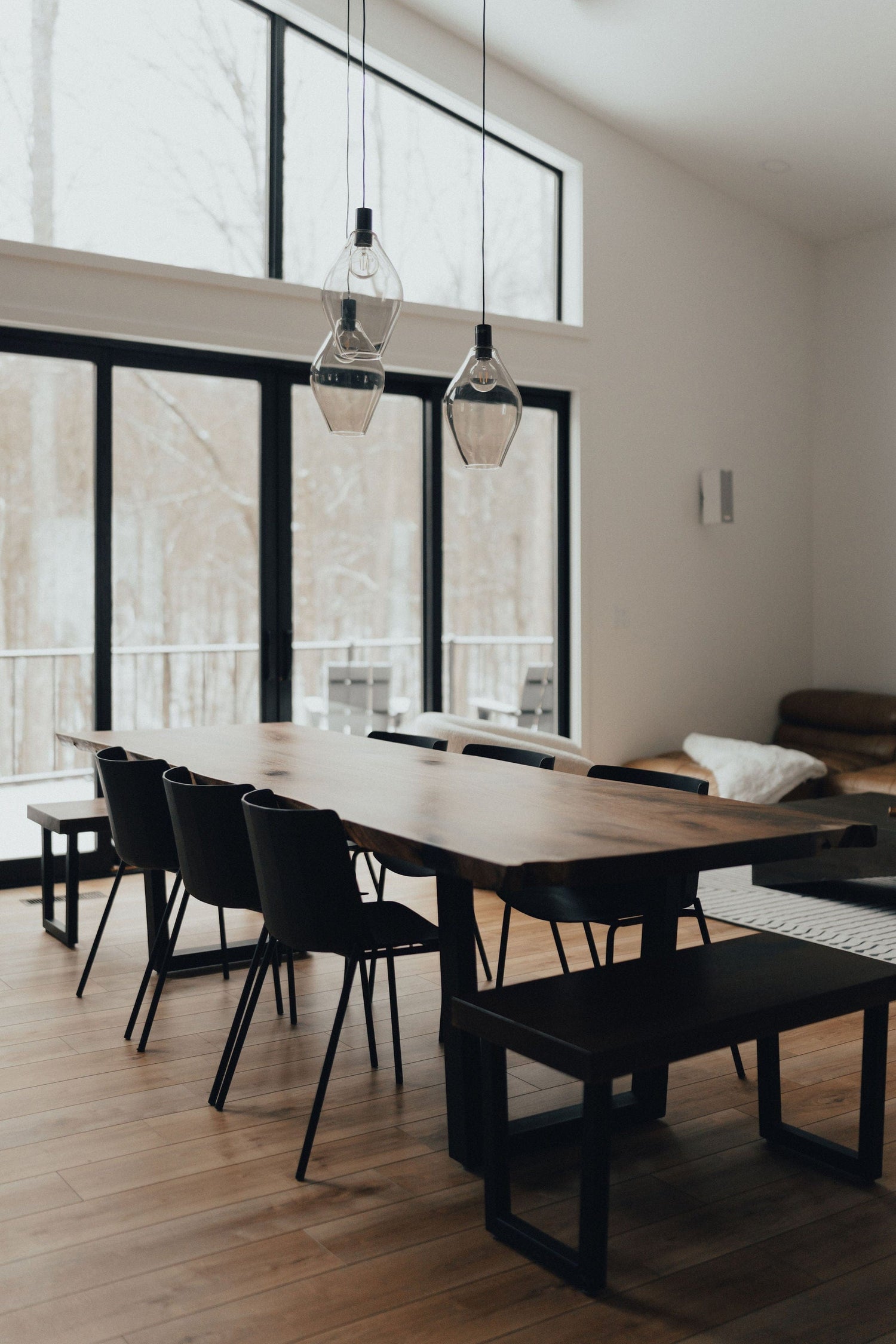How the Right Dining Room Table Legs Can Complete Your Dining Room Look
How the Right Dining Room Table Legs Can Complete Your Dining Room Look
Blog Article
Exactly How to Pick the Perfect Dining-room Table Legs for Your Home Decoration
Picking the ideal dining room table legs is a nuanced process that calls for mindful consideration of various aspects, including your area constraints, aesthetic choices, and useful demands. The interplay in between dimensions, materials, and styles can dramatically affect the setting of your eating area, making it necessary to approach this decision methodically.
Assess Your Eating Space
Examining your dining room is essential for selecting the right table legs that match both aesthetic appeals and performance. Begin by measuring the dimensions of your eating area, including ceiling elevation, flooring area, and distance to various other furnishings. This info will assist establish the appropriate dimension and elevation of your table, which directly affects the option of table legs.
Following, think about the style and layout of your eating room. An open-concept layout may benefit from table legs that offer aesthetic lightness, such as slender steel or acrylic options. On the other hand, an extra conventional setup could call for tough wooden legs that supply a feeling of permanence.
Examine the existing color scheme and products in your dining location. Balancing the table legs with these components produces a natural look that improves the overall decoration.
Inevitably, a thorough evaluation of your dining space will certainly assist you in making an informed decision, ensuring that your table legs not only boost the visual allure but also offer useful objectives.
Consider Your Style Preferences
When picking dining-room table legs, it is vital to review your personal style preferences, as they dramatically influence the overall visual of your eating space. Your option of table legs can either complement or comparison with existing décor, making it vital to align them with your recommended indoor style style.
If your home leans in the direction of a contemporary aesthetic, consider smooth steel or minimalist wooden legs that provide a clean, uncluttered appearance. For an extra standard method, ornate wood legs with complex carvings can include a touch of elegance and elegance. Industrial styles gain from robust, basic materials such as redeemed timber and metal mixes, showing a sturdy beauty.
Furthermore, farmhouse and rustic designs commonly favor durable, chunky legs that stimulate a sense of warmth and convenience. On the other hand, if your decoration is diverse, you may pick unconventional forms or a mix of products to produce visual rate of interest.

Evaluate Material Options
The choice of product for eating room table legs plays an essential function in both durability and visual charm. Typical products include wood, metal, and composite options, each offering distinct attributes that can influence the overall appearance and durability of your table.
Timber is a classic selection, recognized for its warmth and flexibility. Woods like oak and walnut offer outstanding toughness and can be ended up in various spots to match any kind of style. Nonetheless, softwoods like want are extra vulnerable to scratches and damages, making them much less excellent for high-traffic areas.
Metal legs, commonly crafted from steel or light weight aluminum, exude modernity and commercial beauty. They are highly long lasting and immune to wear, making them suitable for families with kids or constant gatherings (dining room table legs). Additionally, steel can be ended up in different shades, improving the modification opportunities
Composite products, such as MDF or laminate, deal price and varied designs. While normally less long Visit Your URL lasting than solid go to this web-site timber or steel, they can still offer a fashionable appearance and are often simple to preserve.
Ultimately, the product you pick need to straighten with your way of living, visual preferences, and the level of use your eating table will experience.
Determine Height and Dimension
Choosing the proper elevation and size for your dining area table is essential for both performance and comfort. The basic elevation for eating tables generally varies from 28 to 30 inches, permitting sufficient legroom for the majority of people when seated. It is crucial to consider the dimensions of your eating area and the kinds of chairs you prepare to make use of.

Additionally, think about the percentages of your dining-room. A bigger table in a spacious location can create a grand atmosphere, while a smaller table functions well in even more intimate settings. Eventually, the best height and size will certainly balance with your overall decoration and improve the eating experience for you this hyperlink and your visitors.
Explore Customization Possibilities

In addition, the layout of the legs can be customized to fit numerous styles, such as rustic, contemporary, or industrial. For instance, conical legs can evoke a mid-century modern-day feel, while beefy, block-style legs might reverberate with conventional or farmhouse decoration.
Property owners can also explore shade surfaces, from all-natural wood discolorations to paint, enabling them to match or contrast with the table top and surrounding decor.
Furthermore, leg elevation can be gotten used to suit particular seating plans or individual preferences, improving both convenience and capability.
Lastly, unique decorations, such as carvings or decorative braces, can even more customize the table legs, making the eating experience not just a statement but a dish piece in the home. By considering these personalization options, property owners can produce an eating space table that absolutely mirrors their originality.
Final Thought
Picking the perfect dining-room table legs needs cautious factor to consider of numerous variables, consisting of the dimensions of the eating space, style preferences, material sturdiness, and desired elevation. Customization choices even more improve the capacity to attain a cohesive aesthetic that enhances the overall design. By systematically assessing these aspects, property owners can guarantee that the picked table legs not just accomplish functional needs however additionally add favorably to the eating experience and setting of the home.
Choosing the perfect eating room table legs is a nuanced process that calls for mindful consideration of numerous components, including your area constraints, visual preferences, and functional requirements.Analyzing your eating area is essential for selecting the right table legs that complement both visual appeals and functionality.When identifying size, gauge the area where the table will certainly be positioned to guarantee it fits easily, allowing for at least 36 inches of clearance around the table for very easy movement. A bigger table in a roomy location can create a grand setting, while a smaller sized table functions well in more intimate settings.Picking the ideal eating room table legs needs careful consideration of numerous variables, including the dimensions of the dining space, style choices, material durability, and desired height.
Report this page